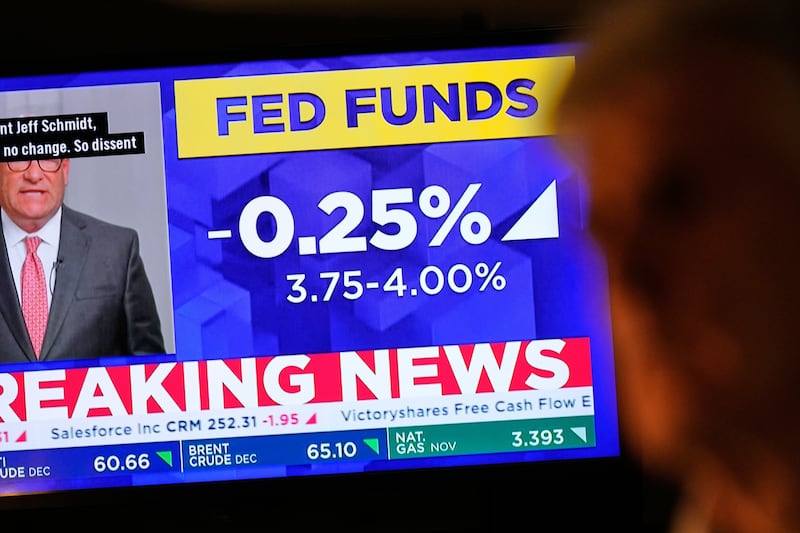- The Federal Reserve cut its benchmark interest rate by .25%.
- Fed Chairman Jerome Powell says the labor market is still in gradual decline.
- Amid still rising inflation, another rate cut in December is not a lock.
The Federal Reserve on Wednesday noted that even amid a government shutdown that has brought federal employment reports to a standstill, other sources reflect the labor sector is continuing to slow, albeit at a relatively slow pace.
And that was enough to drive the U.S. central bank to assess another .25% cut to its benchmark federal funds rate, bringing the range down to 3.75% to 4% following a 10-2 vote by the Fed’s rate-setting Open Market Committee.
At a press conference following the meeting, Fed Chairman Jerome Powell said the two dissenting votes reflect the challenges currently facing the monetary body. While one nay voter would have preferred a larger cut, the other wanted no interest reduction at all.
“There is no risk-free path forward,” Powell said.
That’s thanks to current economic conditions in which both sides of the Fed’s dual mandate of maximum employment and price stability are under fire, with inflation on the rise alongside a softening employment market.
Generally speaking, rate reductions help spur economic activity by reducing the cost of debt which can promote business activities like investment and hiring. Rate hikes, which increase the cost of consumer and commercial debt, quell spending and, theoretically, help slow down inflationary price increases.
Wednesday’s cut follows a .25% reduction assessed at the Fed’s September meeting but while the central bank previously signaled that there could be three interest rate reductions before the end of the year, Powell said another cut at the final meeting in December was not a given.
“In the committee’s discussions at this meeting, there were strongly differing views about how to proceed in December,” Powell said. “A further reduction in the policy rate at the December meeting is not a foregone conclusion. Far from it.”
Economy facing dual threat
The last federal jobs data released in September before the shutdown found U.S. employers added only 22,000 new positions in August, falling far short of the 75,000 predicted in a Dow Jones survey of economists ahead of the report. The national unemployment rate moved up to 4.3% in August, the highest level since 2021.
A delayed inflation report, that was released last week amid the shutdown but only because of the need for a Social Security benefits adjustment, showed overall prices on goods and services continuing to move up.
The Labor Department’s Consumer Price Index found inflation moved up 0.3% on a monthly basis in September and came in at 3% over the past 12 months, up a tenth of a percent from August. Core inflation, which strips out volatile food and energy prices, rose 0.2% from August to September and matched the headline annual inflation rate of 3%. Last month’s core inflation rate eased slightly from August’s 3.1% measure.
Rising gasoline prices across the country were the biggest single contributor to the monthly uptick in the all-items inflation reading, according to the Labor Department. Average gas prices moved up 4.1% from August to September, according to the report, but are still 0.5% below this time last year.
Overall food prices across the U.S. rose by 3.1% in September compared to a year ago, with groceries increasing by 2.7% and food away from home 3.7% more expensive over the last 12 months.
Shelter costs, which account for about one-third of the CPI inflation calculation, rose 0.2% from August to September and were up 3.6% from a year ago.


